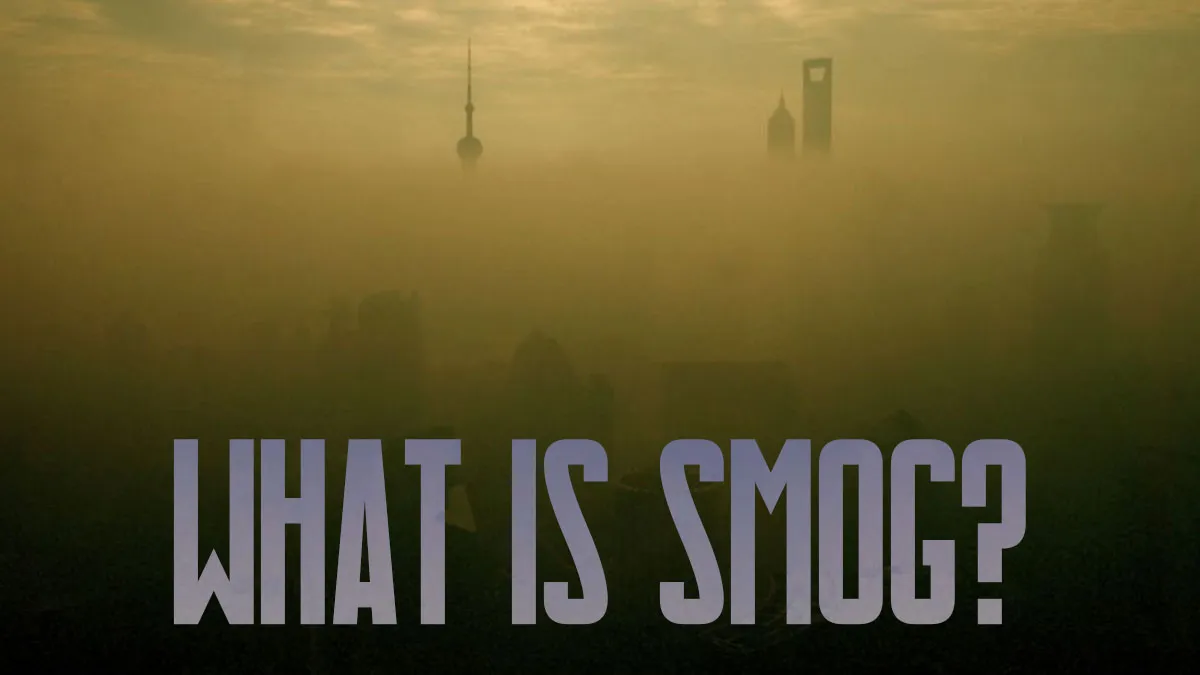Smog in Pakistan: Causes, Impacts, and Solutions for Cleaner Air

Smog in Pakistan is not just an inconvenience—it’s a pervasive health and environmental hazard that clouds the future of its rapidly growing cities and their residents. This environmental scourge significantly impacts public health, economic productivity, and ecological balance. This article provides an in-depth look at the challenges and solutions related to smog in Pakistan, advocating for immediate action and long-term strategies to combat this silent gray enemy.
What is Smog?
Smog, primarily composed of particulate matter and ground-level ozone, is a potent form of air pollution. In Pakistan, major urban centers like Lahore, Karachi, and Islamabad are frequently enveloped in this harmful haze, exacerbated by specific local and seasonal factors. These pollutants originate from several sources, making them particularly challenging to control.
Sources and Composition
Particulate Matter (PM2.5 and PM10): These tiny particles can penetrate deep into the lungs and are linked to numerous health problems, including respiratory infections, heart disease, and premature death.
Ground-level Ozone: Formed when pollutants from cars, power plants, and industrial boilers react in sunlight. While ozone high in the atmosphere protects us from the sun’s ultraviolet rays, at ground level it is a dangerous pollutant.
Health and Environmental Impacts
The health repercussions of smog are profound and far-reaching. For vulnerable populations, such as the elderly, children, and those with pre-existing health conditions, the risks are even greater. The environmental consequences are equally severe, affecting wildlife, vegetation, and water bodies.
Health Risks
Respiratory and Cardiovascular Diseases: Chronic exposure to smog can lead to chronic obstructive pulmonary disease (COPD), asthma exacerbation, and other respiratory ailments, as well as cardiovascular problems.
Mortality: There is a clear correlation between high smog levels and increased mortality rates, underscoring the lethal nature of this pollution.
Environmental Degradation
Reduced Agricultural Productivity: Smog can stunt plant growth, compromising food security.
Damage to Ecosystems: Aquatic life and wildlife are also vulnerable to the toxic substances carried by smog, which can alter habitats and food sources.
Causes of Smog in Pakistan
The genesis of smog in Pakistan is tied to both human activity and natural conditions, with major contributions from:
Industrial Emissions: Many factories lack modern pollution controls and emit a significant amount of pollutants.
Vehicular Emissions: Rapid urbanization has increased the number of vehicles on the road, many of which are poorly maintained and highly pollutive.
Agricultural Practices: Crop burning, a common practice in many parts of Pakistan, releases massive quantities of particulate matter into the air.
Solutions to Combat Smog
Policy and Regulatory Reforms
Implementing and enforcing stricter pollution control measures can significantly reduce smog. This includes revising standards for industrial emissions and vehicle exhausts, and enforcing compliance through monitoring and penalties.
Technological Innovations
Promoting the adoption of cleaner technologies in industries and the automotive sector can reduce emissions. Furthermore, investing in renewable energy sources like solar and wind can decrease reliance on fossil fuels.
Public Awareness and Individual Actions
Public education campaigns can play a crucial role in changing behaviors, such as reducing vehicle use and avoiding the burning of waste. Additionally, individuals can contribute by adopting greener practices and supporting policies aimed at improving air quality.
Clean Air Solutions
For indoor air quality management, using air purifiers can significantly help, especially during peak pollution periods. Identifying the best air purifier in Pakistan involves considering factors like the specific pollutants it can filter, the size of the area it covers, and its efficiency.
Conclusion
The fight against smog in Pakistan is a complex challenge that requires a concerted effort from government bodies, private sectors, and the public. By understanding the sources and impacts of smog and implementing a multi-faceted approach to combat it, Pakistan can clear the air and safeguard its future. Through regulatory reforms, technological innovations, and public participation, the nation can breathe easier and foster a healthier environment for all its citizens.
FAQs
What are the primary pollutants in Pakistan’s smog?
The primary pollutants in Pakistan’s smog include particulate matter (PM10 and PM2.5), nitrogen oxides (NOx), sulfur dioxide (SO2), carbon monoxide (CO), and volatile organic compounds (VOCs). These pollutants are chiefly emitted from vehicles, industrial activities, and burning of agricultural residue.
How significant is vehicular emission in contributing to smog in Pakistan?
Vehicular emissions are a major contributor to smog in Pakistan, especially in urban areas like Lahore and Karachi, where the density of older and poorly maintained vehicles is high. These emissions are rich in NOx and VOCs, which are key precursors to ozone, a major component of smog.
Can technology reduce industrial smog emissions in Pakistan?
Yes, technology such as electrostatic precipitators, fabric filters, and flue-gas desulfurization can significantly reduce industrial emissions of particulate matter and sulfur dioxide, respectively. Adoption of these technologies, along with stricter enforcement of environmental regulations, can help mitigate industrial smog in Pakistan.
What is the impact of agricultural burning on Pakistan’s air quality?
Agricultural burning, particularly of rice stubble and wheat residue, significantly deteriorates air quality in Pakistan. It releases large quantities of particulate matter and other pollutants that contribute to the formation of smog, affecting both rural and urban air quality.
How effective are air purifiers in combating indoor pollution from smog in Pakistan?
Air purifiers equipped with HEPA and activated carbon filters are effective in reducing indoor pollution by filtering out particulate matter and adsorbing gases and odors. They are particularly useful during the smog season in urban areas of Pakistan where outdoor air quality deteriorates significantly.
Which cities in Pakistan are most affected by smog?
The Pakistani cities most severely affected by smog are Lahore, Multan, Sialkot, and Islamabad. Lahore frequently experiences extreme smog levels that significantly impact air quality and public health. Multan and Sialkot also face high pollution levels due to industrial activities and vehicular emissions. Islamabad, while relatively better, still deals with considerable smog issues, especially during the colder months when stagnant air allows pollutants to accumulate.
